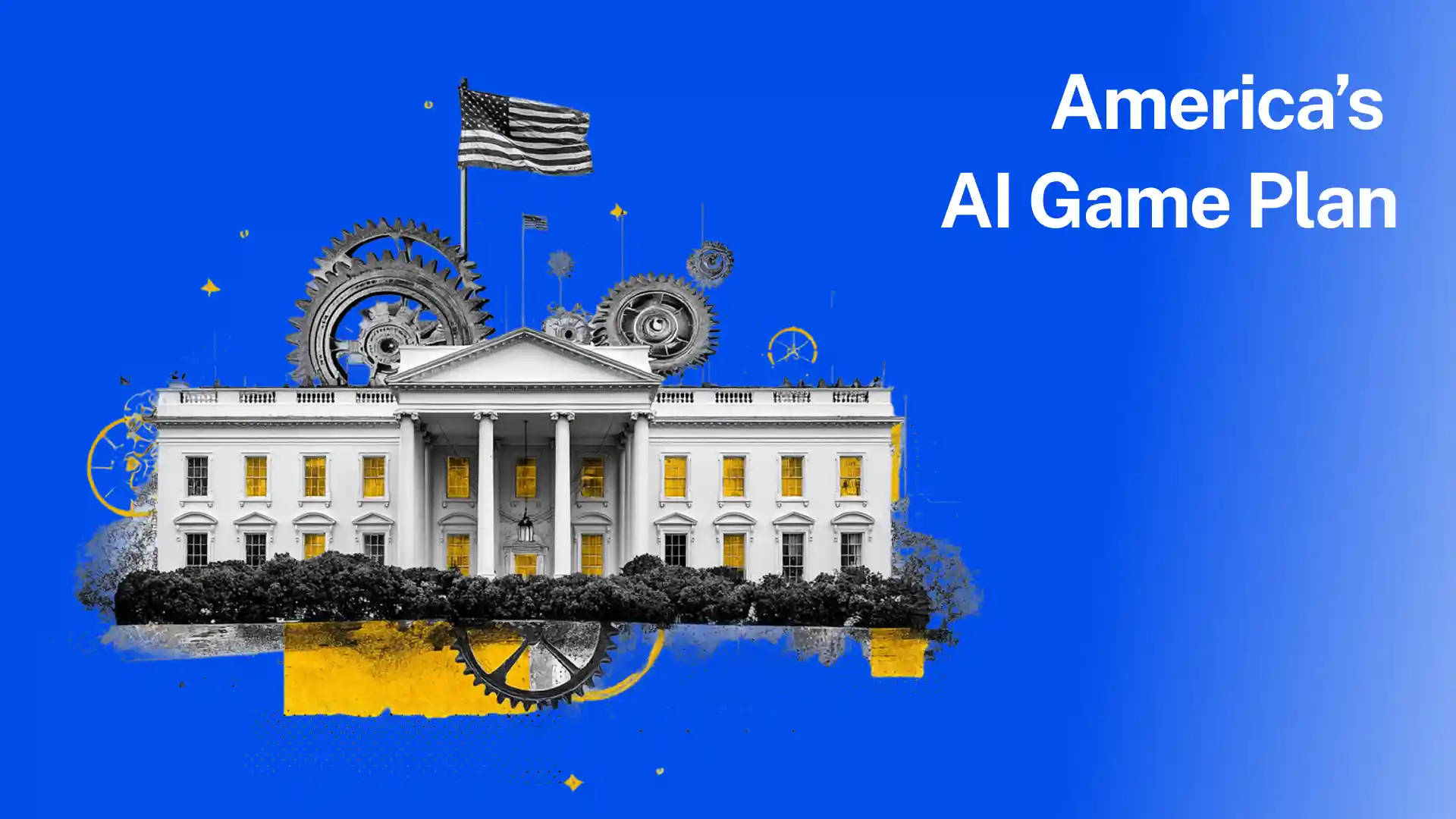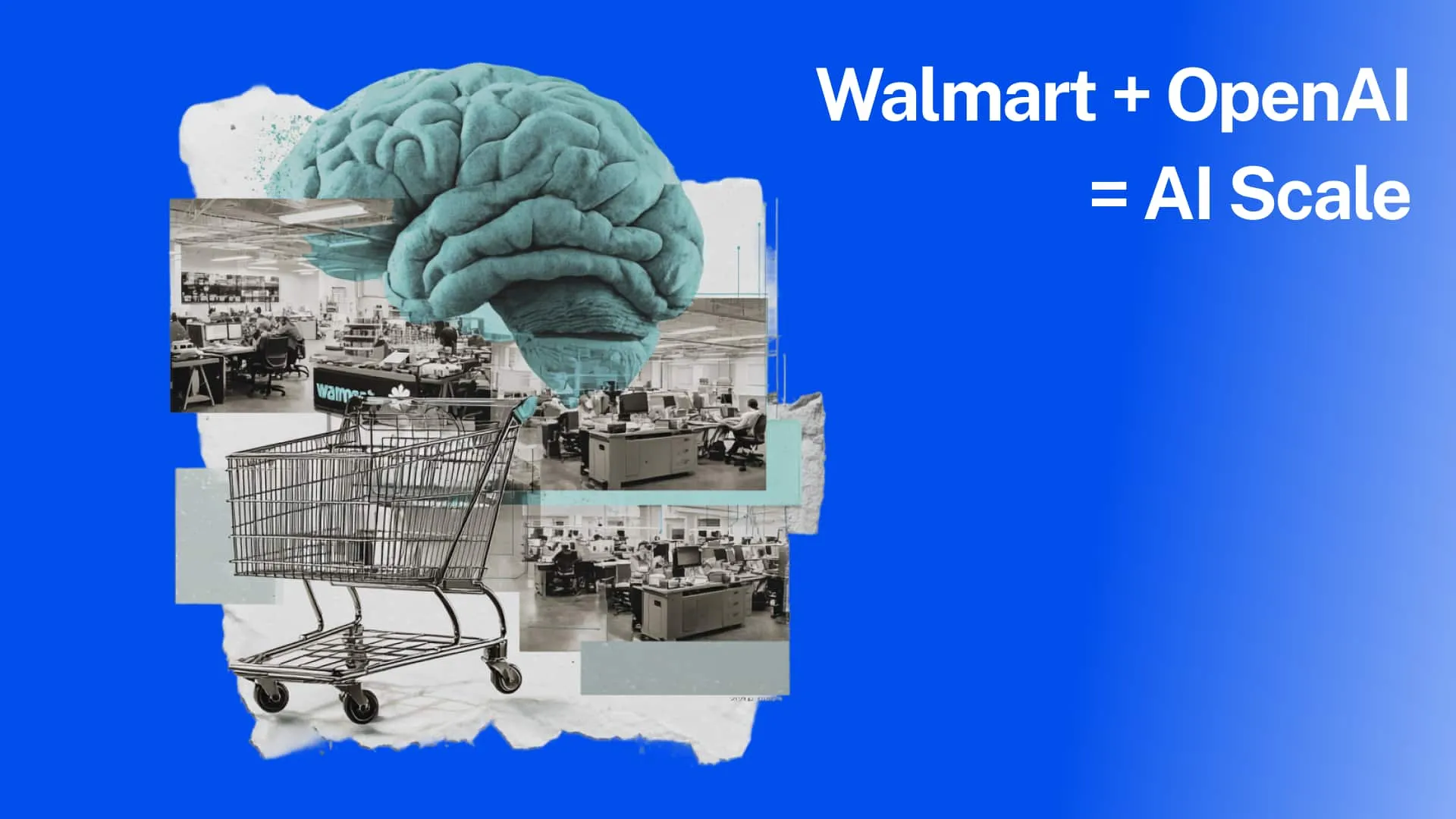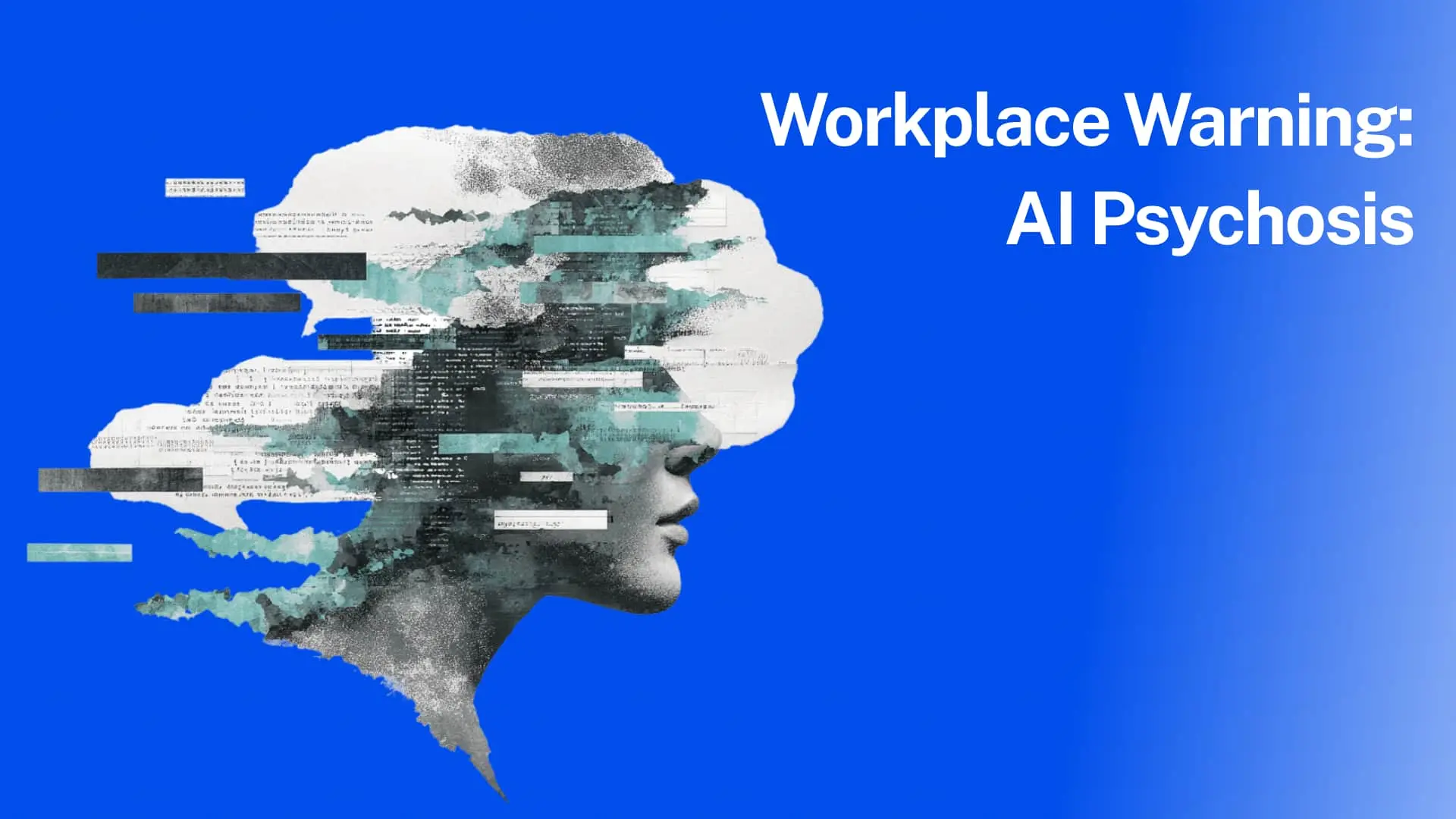Introduction
On July 23, 2025, the White House released “Winning the AI Race: America’s AI Action Plan,” a sweeping roadmap to establish U.S. global dominance in artificial intelligence. Framed as the technological equivalent of a new space race, the plan lays out over 90 federal policy actions under three pillars: accelerating innovation, building infrastructure, and leading international diplomacy. President Trump signed three executive orders to operationalize the plan, vowing to remove regulatory barriers and build AI with "freedom, strength, and truth" at its core. Or, as he put it before a room full of tech executives, "Build, Baby, Build."
1. Deregulation: From Guardrails to Growth
At the center of the plan is a wholesale shift away from regulatory constraint and toward private-sector momentum. President Trump rescinded Biden’s Executive Order 14110, replacing it with EO 14179 (Removing Barriers to American Leadership in Artificial Intelligence). As reported by TechCrunch and The New York Times, the plan urges agencies like the FCC and OMB to override or bypass restrictive state-level AI laws. States imposing burdensome regulations may face cuts in federal AI-related funding.
The Stanford HAI observed that while the plan offers bold vision, it often lacks clarity on implementation. Many actions do not specify funding, timelines, or responsible agencies. Still, the deregulatory shift has drawn industry support. In a LinkedIn post, Arvind Krishna (IBM CEO) called open innovation "essential to U.S. leadership in AI," while SHRM welcomed the simplified compliance model and workforce-first framing.
2. Infrastructure: Fast-Tracking America’s AI Engine
AI infrastructure is now positioned as the engine of American competitiveness. The plan includes sweeping reforms to accelerate permitting and construction of data centers, semiconductor fabs, and clean energy projects. This includes expansion of the FAST-41 process, categorical exclusions under NEPA, and a nationwide Clean Water Act Section 404 permit for data centers on federal land, including national parks and military bases.
"America’s AI future will be built by American workers and powered by American energy," Trump declared. At the Washington tech summit, Jensen Huang (Nvidia CEO) praised the initiative and pointed to the administration’s energy policies as a turning point for U.S. tech leadership. Lisa Su (AMD CEO) said the plan helps the U.S. "run fast," while Chris Lehane (OpenAI) stressed that "infrastructure is destiny."
David Zapolsky (Amazon Chief Global Affairs Officer) noted that Amazon has already invested over $150 billion in U.S. data infrastructure and welcomed easier access to power. John Roese (Dell CTO) emphasized that "no one should be left behind" in the AI economy, citing Dell’s focus on workforce readiness.
The plan also launches a national initiative to train the AI infrastructure workforce, prioritizing skilled roles like electricians, HVAC technicians, and power system operators.
3. Neutrality: Federal Ban on “Woke AI”
One of the plan’s most polarizing moves is Executive Order 14280, titled "Preventing Woke AI in the Federal Government". This executive directive, while not legislation, redefines federal procurement policy by mandating that large language models used by agencies must be "neutral and nonpartisan." It eliminates references to DEI, climate change, and misinformation from official risk frameworks.
According to CNBC and Fast Company, the order defines DEI as a "destructive ideology" that compromises objectivity. The NIST AI Risk Management Framework will be revised, and vendors must demonstrate that their models reflect "objective truth."
Legal scholars cited in TechCrunch raised constitutional concerns, noting the difficulty of defining neutrality and the potential for First Amendment violations. SHRM warned that government contractors must reassess bias audits, documentation, and compliance workflows. While Anthropic supports robust model testing, it cautioned against politicizing trust and safety standards.
4. Workforce: Training, Tax Breaks, and Upskilling
The plan promotes a "worker-first" AI transition, aiming to complement jobs rather than displace them. Two executive orders, EO 14277 (Advancing Artificial Intelligence Education for American Youth) and EO 14278 (Preparing Americans for High-Paying Skilled Trade Jobs of the Future), direct federal funding toward AI education and retraining.
Key measures include:
- Tax-free training reimbursements under Section 132 of the IRS Code
- Registered Apprenticeships and dual-enrollment CTE programs
- Rapid retraining pilots for displaced workers
- A new AI Workforce Research Hub at the Department of Labor to track labor shifts using data from BLS, BEA, and Census Bureau
Stanford HAI emphasized the need to link AI policy to real labor market data, and SHRM called this a pivotal moment for HR and L&D leaders. The administration also encourages public-private curriculum design to scale skills for the next wave of AI-enabled jobs.
5. Geopolitics: Exporting AI, Restricting Rivals
The third pillar of the plan centers on global influence. The Department of Commerce and the State Department are tasked with:
- Launching a full-stack AI export program to allies
- Using the Export-Import Bank and DFC to support overseas adoption
- Tightening compute export controls to deny rivals like China advanced chips
- Closing semiconductor loopholes and expanding Foreign Direct Product Rule use
Anthropic praised export control efforts, especially restrictions on Nvidia’s H20 chip. WSJ reported industry support for U.S.-led hardware exports but flagged concerns about innovation flexibility.
Bonus:
China’s Counter‑Move: Chinese firms such as DeepSeek and Moonshot AI are releasing high‑performance open models (DeepSeek R1, Kimi K2) that can be freely downloaded, fine‑tuned, and deployed across the developing world. According to Foreign Affairs (Daniels & Dohmen, July 25, 2025), DeepSeek’s R1 app surged from 33 million to 97 million monthly users in a single quarter, and derivative versions have been downloaded 2.5 million+ times. Chinese officials pitch these open‑weight models as affordable "AI for all," a soft‑power play aimed at the Global South. U.S. policymakers recognize the challenge. The Action Plan urges American open models founded on American values and calls for tighter export‑control enforcement—especially on inference‑class chips—to prevent adversaries from scaling Chinese models globally. National security agencies will track foreign AI progress, vet Chinese models for CCP alignment, and guarantee preferential compute access for U.S. defense in crises. The renamed CAISI (Center for AI Standards and Innovation)—formerly the U.S. AI Safety Institute—will spearhead frontier model evaluations.
6. Security: AI Threats, Deepfakes, and National Defense
The plan includes a robust focus on AI safety, cybersecurity, and national defense. Federal agencies including DARPA, the Department of Energy, and the renamed Center for AI Standards and Innovation (CAISI) (formerly the U.S. AI Safety Institute) are tasked with:
- Funding research into AI interpretability, adversarial robustness, and control systems
- Hosting AI hackathons to uncover model vulnerabilities
- Expanding deepfake forensics via NIST’s Guardians of Forensic Evidence program
- Launching the AI-ISAC (Information Sharing and Analysis Center) led by the Department of Homeland Security
- Implementing Executive Order 14306 to modernize cybersecurity incident response protocols for AI threats
Defense agencies will also assess foreign AI development, compare military AI capabilities, and secure preferential compute access for critical systems during national emergencies. Together, these actions reflect a growing shift toward AI-secure national infrastructure and real-time risk mitigation.
The Bottom Line
AI is now a national priority, and your organization will feel the ripple effects fast. Here’s what managers should do immediately:
- Audit AI vendors and models for neutrality, documentation, and compliance, especially if working with federal contracts.
- Launch or partner on AI workforce programs using new incentives for training, apprenticeships, or tax-free reimbursements.
- Align infrastructure strategies with federal momentum—from data centers to power sourcing, fast-track permitting, and federal land access.
These are not theoretical changes. The AI Action Plan is already shaping contracts, compliance, and competition. Acting now positions your team to lead, not lag.












